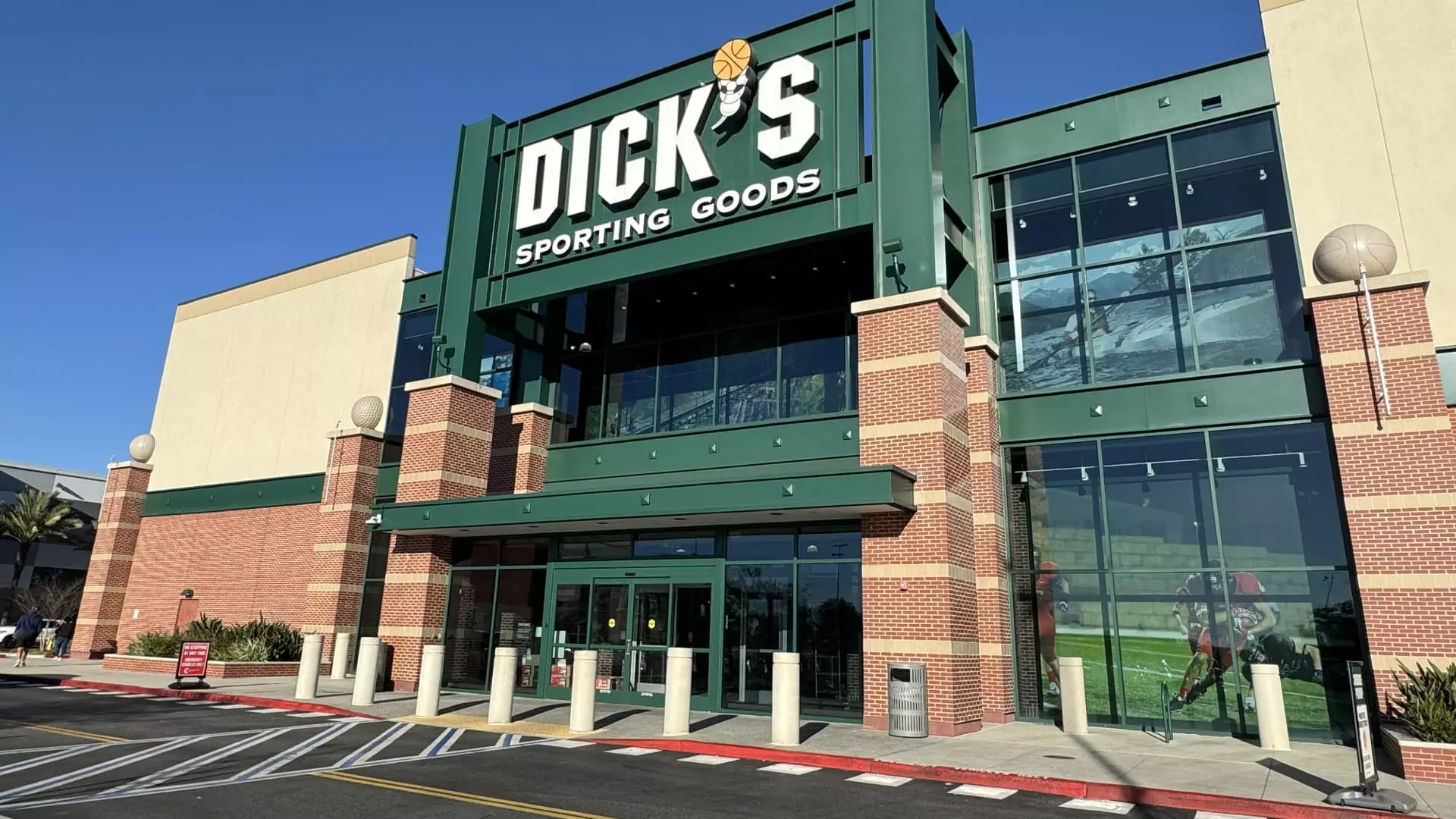On Wednesday, Dick’s Sporting Goods reported stellar earnings for its fiscal second quarter, significantly outperforming analyst expectations with an earnings per share (EPS) of $4.37 against a forecasted $3.83. Revenue figures also exceeded projections, coming in at $3.47 billion compared to an expected $3.44 billion. This impressive showing reflects a net income of $362 million, marking a notable increase from the $244 million recorded in the same period last year. Moreover, sales climbed by 8%, reflecting a strong consumer appetite with comparable sales also advancing by 4.5%, above the 3.6% anticipated by Wall Street analysts.
Despite these encouraging figures, the company’s guidance for the full fiscal year falls short of expectations. Dick’s predicts diluted earnings per share for the year to be between $13.55 and $13.90, a modest upturn from the prior estimate of $13.35 to $13.75. While this may sound like an improvement, the upward adjustment only translates to an increase of approximately 18 cents—considerably less than the 54-cent beat realized in the last quarter. Furthermore, the projected earnings lie below the $13.79 target that analysts were aiming for, casting a shadow on what would otherwise be considered an outstanding earnings report.
The retail industry is rife with anxiety as it prepares for the upcoming presidential election in November. Numerous retailers, including Dick’s Sporting Goods, have issued cautionary guidance for the latter half of the fiscal year, largely due to the potential ramifications of political instability on consumer spending. The uncertainty surrounding the elections comes at a time when the Federal Reserve is also in the spotlight, particularly regarding anticipated interest rate cuts that might further impact consumer behavior and discretionary spending.
While Dick’s maintained its sales forecast at $13.1 billion to $13.2 billion, it has yet to meet the more optimistic expectations set by analysts who were looking for $13.24 billion. Although the company increased its projection for comparable sales growth—from a prior range of 2% to 3% to a new range of 2.5% to 3.5%—this too raises eyebrows given the stronger performance recorded thus far. The company’s future optimism may hinge on macroeconomic factors that are as unpredictable as the upcoming election itself.
Compounding its challenges, Dick’s Sporting Goods recently announced that it had fallen victim to a cyberattack, raising concerns about the security of confidential information. While the company has activated its cybersecurity response plan and is collaborating with external experts to mitigate the issue, the revelation adds an additional layer of complexity to its operational landscape. Despite the company’s confidence that the breach did not disrupt business operations, investors may remain cautious.
Last year, Dick’s faced significant hurdles due to rising theft and markdowns on excessive inventory, which substantially hampered profits. However, current statements indicate that these hardships may be behind them, particularly as major competitors like Target and Walmart report a decline in inventory shrinkage. Efforts to bolster operations and reduce reliance on self-checkout machines have reportedly contributed to a stabilizing retail environment.
As retailers continue to release second-quarter results, a common trend emerges—strong performance paired with lackluster guidance for the remainder of the year. Investors are left grappling with the complex interplay of strong earnings against a backdrop of heightened caution. With mounting research focused on operational efficiency and technologies to combat theft, it seems that while growth may appear robust on the surface, underlying issues are still surfacing.
Analysts and investors will closely monitor Dick’s Sporting Goods as it discusses its performance and strategies in more detail during an analyst call set for 8 a.m. ET. The coming months will prove crucial not only for Dick’s but for the entire retail sector as businesses navigate the challenges of electoral uncertainty and economic shifts that could trump even the most reliable sales forecasts. In the evolving landscape of retail, insights garnered from such discussions may offer critical guidance for both the company and its investors during uncertain times.

